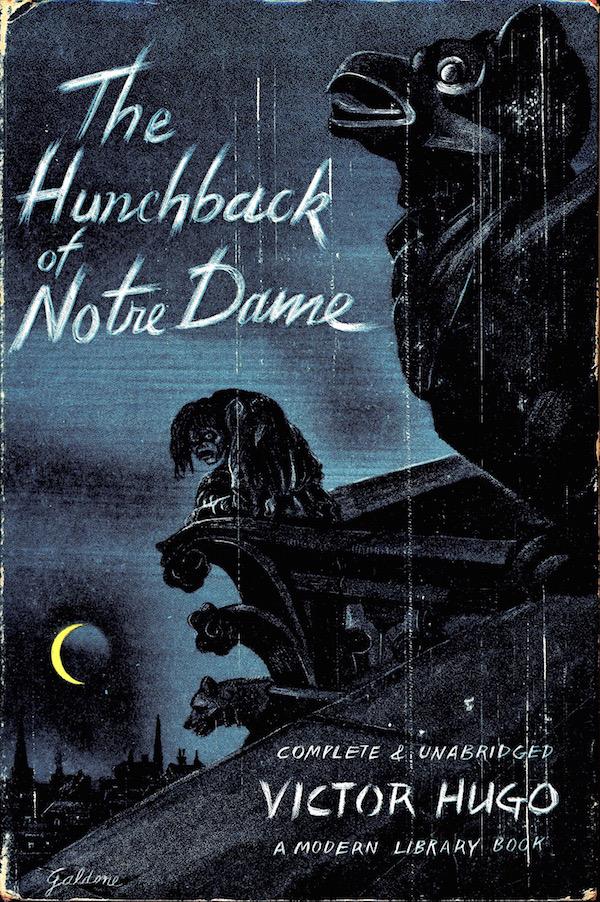
Today we’re
reviewing a book I’ve sat on for literal months to review. No, seriously, I
started reading it months ago and just kept putting it down because it was such
a chore to get through. Yes, that probably says something about how much I like
it. But I’m not going to just review xenofiction all the time.
Once every while I feel like taking a look at a literary book is worth its
time.
So, behold,
as today, I’m reviewing The Hunchback of Notre Dame, or Notre Dame de Paris by
Victor Hugo. Also, fun fact: Not counting The Holy Bible, this is the oldest
book I’ve read so far. Anywho, let’s dive in.
Okay, so I
could give a plot synopsis here, but the book kinda goes all over the place. So
I’ll just try. We have the Notre Dame cathedral in Paris, in which the
hunchback Quasimodo was raised by the archdeacon, Frollo. There’s this Romani
girl called Esmeralda, and both Quasimodo and Frollo have the hots for her. So does
a poet named Pierre.
A whole lot of stuff goes down, but it comes down to Esmeralda not returning the
affections to any of these men. This angers Frollo, who wants to get her hanged
because of this. Esmeralda ends up in Notre Dame where Quasimodo looks after her,
but is she really save there…?
Spoiler
alert... because this book is literally over 150 years since this
book was published...
No she
isn’t. She gets hanged in the end, Frollo dies by being thrown off of Notre
Dame while laughing at the sight of her death by Quasimodo, and Quasimodo himself just
dies of starvation besides Esmeralda’s body and later his bones turn to dust.
Yippee.
The plot
wasn’t really too intriguing. It’s basically a love
triangle... quartet... quintet if you count Phoebus and there’s a horny
archdeacon trying to get the main character killed. Okay, the latter is a bit
more interesting, but know one thing about me: I dread love triangles... or
quintets in this case. Most media surrounding those I’m bound not to like. The
1996 Disney adaptation of this book is one of the rare exceptions to this, fun
fact. But not this book. It just couldn’t really capture my interest, which is
why I kept putting it down and took so long to finish it.
One thing I
can appreciate about the novel is one of the goals it was trying to accomplish:
keeping the important old architecture. Back in the time when Hugo started
writing this novel, a lot of old buildings were being replaced with modern
ones. Hugo wrote The Hunchback of Notre Dame to hopefully get people to appreciate
the old, medieval architecture. Notre Dame herself was in a state of disrepair.
Literal
chapters of the book are dedicated to just describing the beautiful old
architecture of Paris. These chapters for me were a bit tough to get through,
but back then were very relevant. And it seemingly worked, seeing how Notre
Dame’s still in Paris. Been there myself even.
So, yeah,
I’m glad Hugo dedicated attention to the architecture in the novel, even if it
was hard to get through. It may just have protected Gothic architecture in the
long run.
The
characters aren’t mightily amazing, but they get the point across.
Despite the
commonly-used English title of the book, Esmeralda is actually the main
character. I quite enjoyed her, with how she refuses to accept Frollo’s
disgusting advances even if her own life is at stake.
Quasimodo,
Phoebus and Pierre I didn’t care much about. Pierre I even downright couldn’t
stand in the end.
Frollo makes
for an intimidating villain. He’s definitely a creep I don’t want after me, and
his death felt rather satisfying. I don’t have much to say about
him, he’s just a good villain.
The pacing was a little bit on the slower side, especially since
we got some chapters just describing the architecture of Paris. So, yeah, if
you want a rather quickly-paced book, this just isn’t for you.
Overall, while I do appreciate Notre Dame de Paris for its
intention to save medieval architecture and its main character and villain, it
just wasn’t for me. The plot is a little bit all-over the place with so many
characters to focus on, and the slow pacing just couldn’t keep me engaged for
long.
If you want to check out this book for its historical value
or simply to read a medieval romance or something along those lines, I guess I
can recommend it. But, other than that, I’d give this one a pass.
Rating: 2/5
No comments:
Post a Comment